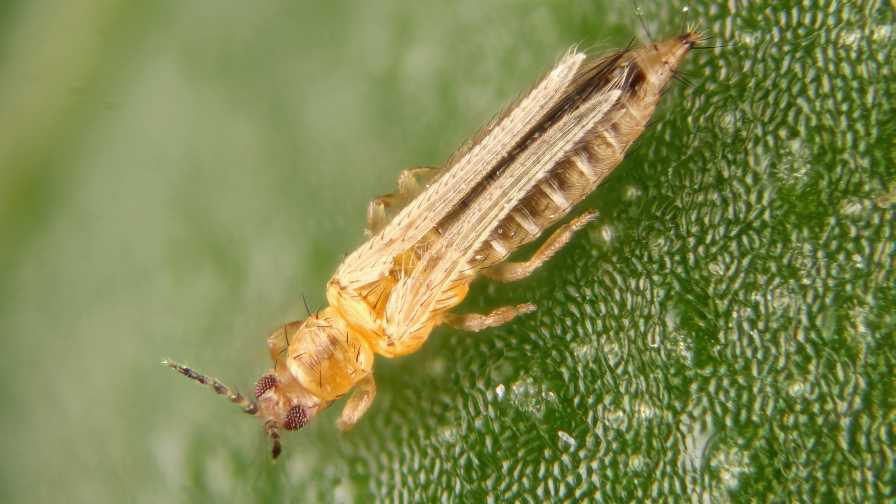Tips on Managing Thrips in Greenhouse Strawberries

Photo: Matthew Bertone
Western flower thrips (Frankliniella occidentalis) are among the most damaging greenhouse pests, especially on strawberries. Adult thrips are slender insects about 1 millimeter long.
Thrips feed by piercing the cells and sucking out their contents, leading to silver/gray patches. Thrips especially feed on growing points and flower buds, leading to distortion of these tissues as they develop. Greenhouse strawberry crops are sensitive to thrips damage, which can cause severe plant damage and unmarketable fruit.
Historically in the U.S., leafy greens, microgreens, and other fast turnaround crops have been popular among controlled environment agriculture (CEA) growers. Recently, CEA companies are beginning to consider greenhouse strawberries as another crop because it is also a highly perishable and higher value crop.
Unlike leafy green and herb production that often take less than two months to complete a full growing cycle, strawberry plants are frequently grown for a longer duration of time. Consequently, the longer a plant is placed in a CEA operation, the risk of a pest infestation generally increases.
Regardless of the pest, a comprehensive pest management strategy must be considered before starting an indoor strawberry operation. Preventing a pest infestation is easier than combating one that has already occurred. CEA growers should be trained to accurately identify insects, symptoms, and scout/document all pest populations on a weekly basis to ensure pests are closely monitored and managed below an economically injurious level. Quick interventions are needed if thrips are identified because they can rapidly multiply especially when a steady source of pollen is available from the flowers.
A recent eGro alert outlined common symptomology, presented an initial framework for integrated pest management, and concluded with some additional resources. Click here to read the complete article.









